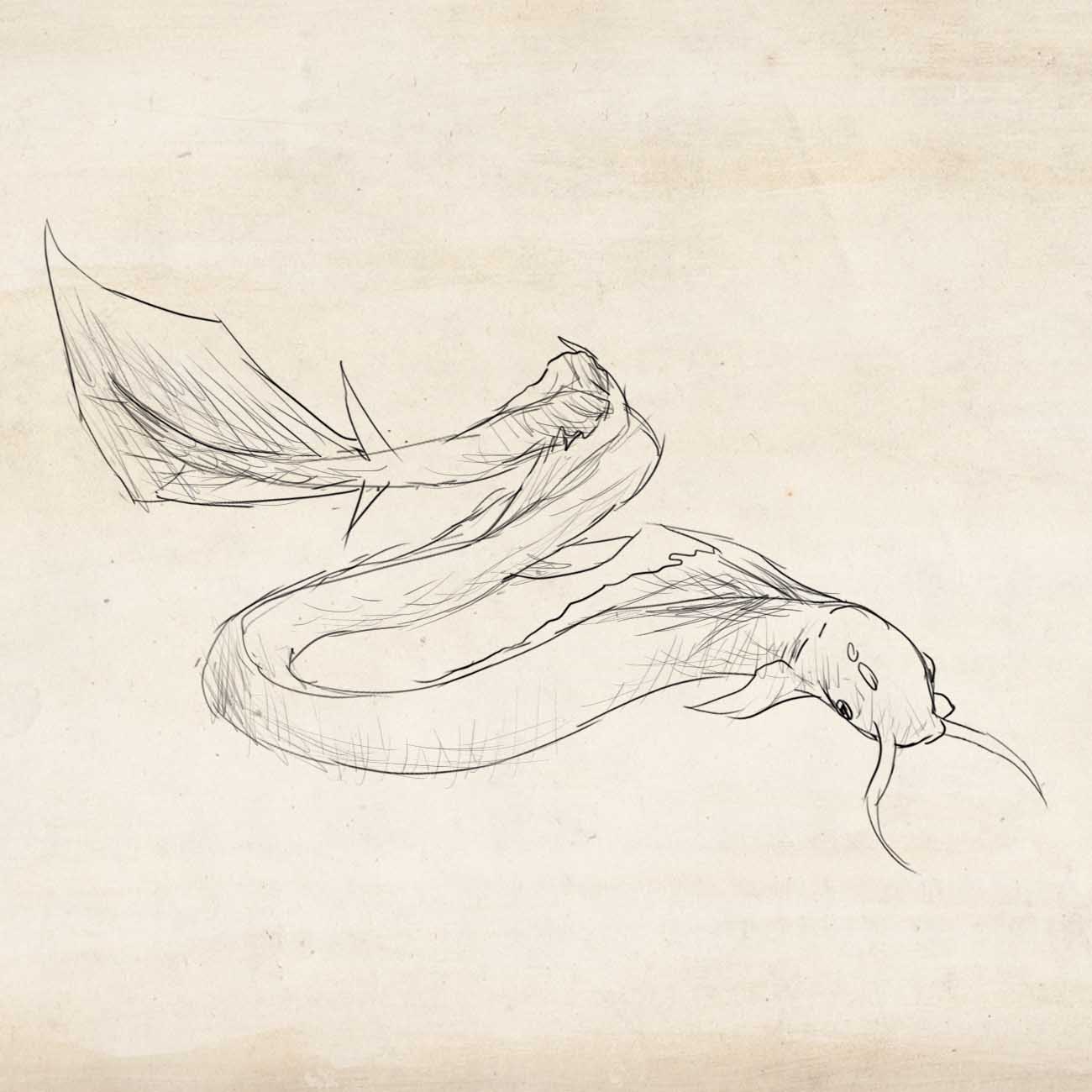Prairiefish
A small herbivorous fish that swims fast over the seabed, and has a habit of producing slime to escape from predators. Their preferred method of defense is to spew as much of this slime as possible, where it will float in chunks in the water, and burn the skin of any creature that touches it. It also prefers to swim away from conflicts due to it being physically weak, and instead makes use of its craftiness to survive.
Basic Information
Anatomy
Prairiefish have long eel-like bodies with soft scales. Their dorsal fins take up nearly a third of the body's length, with the pectoral fins small in comparison, and the rhombus-shaped tail fin larger than every other fin. The creature has a small jawless mouth, two whiskers, four glowing eyes, and two glands on either side of its head used to produce and spew its slime.
Genetics and Reproduction
Prairiefish have a particular breeding season where a group of them gather in one concentrated area. There will often be a lot more males in the area than females, and they show a behavior of competing with each other over a female to no end. Oftentimes, these competitions will result in the creature forming a large ball with each other, with them all mating at once. Eventually, the balls will dissipate, and the mothers left behind will reserve their time to laying hundreds of tiny eggs everywhere. The only way these eggs will survive is through being too numerous to be picked off by predators.
Growth Rate & Stages
Newborn Prairiefish start out extremely small, lacking pronounced fins, as well as the ability to produce slime. The young will hatch sporadically, usually leaving their hatching grounds early on to find food. When they are small, they can sustain themselves by feeding on small plants in the seabed, but as they grow larger they'll have to attempt to feed on larger plants. They'll also gain their slime ability at this age, and will begin using it to defend themselves as soon as possible. As adults, their lives will stay the same from then on.
Ecology and Habitats
Prairiefish only live in the Halocline Pits, and live most of their lives searching for a plentiful feeding area. When not searching for food, they are in a period of rest, claiming a temporary residence on the seabed. Oftentimes, they will slither into tight grooves in rocks to hide from predators, usually sharing the space with another member of their species, and some specimens have also been observed producing slime to make a tight wall around themselves to ward off potential threats.
Dietary Needs and Habits
Prairiefish almost solely feed on Black Tubers, and have to travel long distances to find a large patch of them. In order to reach the fleshy tuber part, they dig through the ground around them with their mouths, and consume them from the inside out. They are noticeably hasty when feeding on the tubers, as feeding time is most often when they get attacked by predators, which leads to them spitting slime around them in advance. They may also hollow out the tuber as much as possible and hide inside until any threats pass by.
Biological Cycle
Oftentimes, these creatures' slime can build up on their bodies, and form crystalized mounds. These mounds can sometimes get dislodged from their skin with enough force, though the fish themselves do not manually do it.
Additional Information
Perception and Sensory Capabilities
The Prairiefish relies heavily on its sight, as it is extraordinarily well-developed, able to see great distances away. Its hearing and smell are rather poor in comparison. This creature also uses its whiskers as an extra line of sight when hiding in tight spaces.
Symbiotic and Parasitic organisms
Some very small species of animal, including Vilmacanthids will stick close by to these creatures in order to receive protection from their slime. The Prairiefish themselves seem to attempt to escape them out of caution, as larger groupings of creatures would attract more attention.
Scientific Name
Myxini leimon
Lifespan
Unknown
Average Weight
185 lbs.
Average Length
7 ft.
Average Physique
Slim
Body Tint, Colouring and Marking
Grey-brown skin, grey-green fins, glowing white eyes
Geographic Distribution
Fairly high
Remove these ads. Join the Worldbuilders Guild










Comments